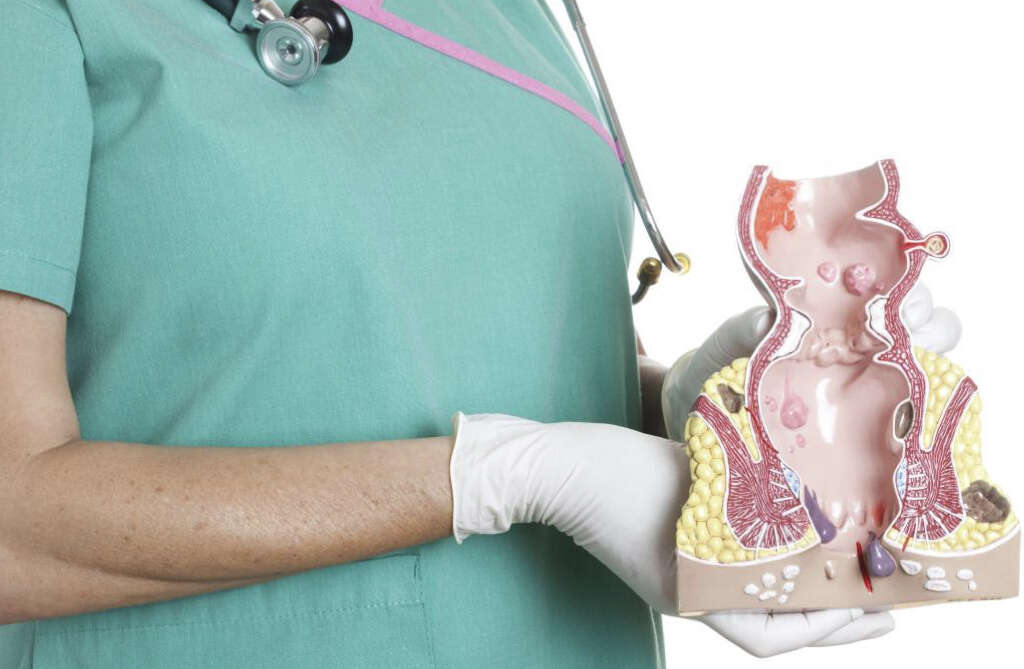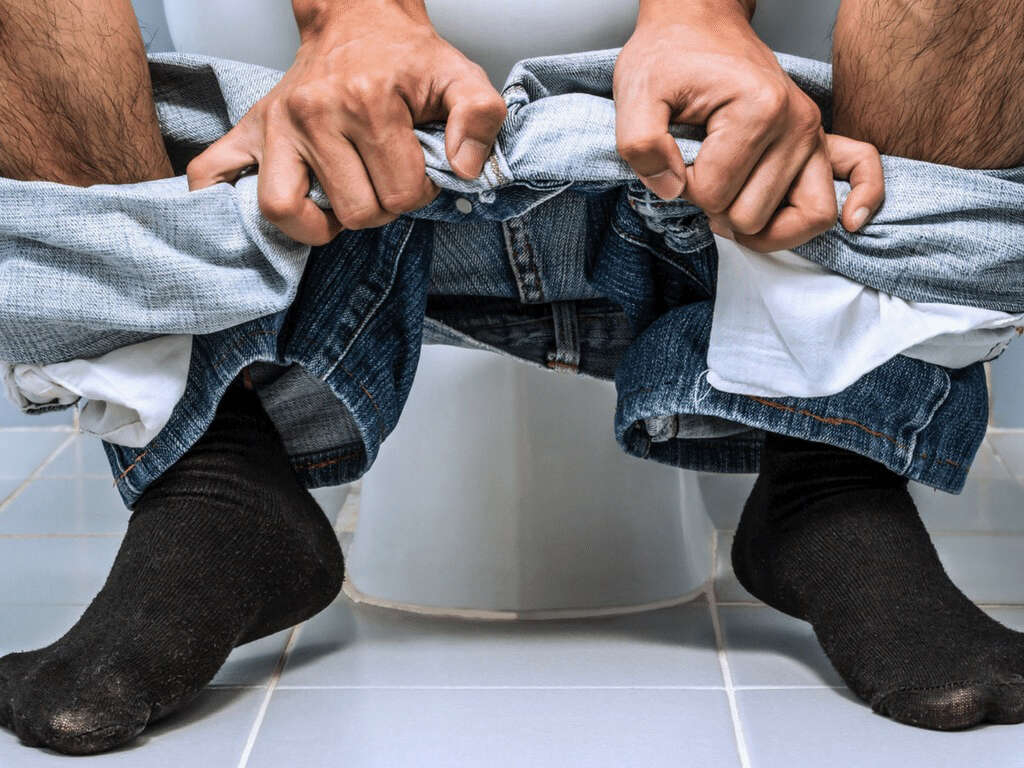10 Constipation Symptoms
 Article Sources
Article Sources
- 1. Constipation. Author: Marc D Basson, MD, Ph.D., MBA, FACS - https://emedicine.medscape.com/article/184704-overview#a5 Update on Rome IV Criteria for Colorectal Disorders: Implications for Clinical Practice. Author: Magnus Simren, Olafur S. Palsson, and William E. Whitehead - https://www.ncbi.nlm.nih.gov/pmc/articles/PMC5378729/
- 2. Bristol Stool Form Scale. Pediatric General Surgery. Stanford Medicine - https://pediatricsurgery.stanford.edu/Conditions/BowelManagement/bristol-stool-form-scale.html
Constipation can be described as having 3 or fewer bowel movements in a single week. Difficulty to pass stools is also a common description associated with constipation. This is a fairly common complaint worldwide, affecting over 15% of the entire US population1Constipation. Author: Marc D Basson, MD, Ph.D., MBA, FACS - https://emedicine.medscape.com/article/184704-overview#a5 Update on Rome IV Criteria for Colorectal Disorders: Implications for Clinical Practice. Author: Magnus Simren, Olafur S. Palsson, and William E. Whitehead - https://www.ncbi.nlm.nih.gov/pmc/articles/PMC5378729/. Constipation can be classified into acute or chronic, with the latter being described as having symptoms for more than 12 weeks within a year. Furthermore, it can be classified into primary constipation and secondary constipation as well.
Primary constipation is also known as functional or idiopathic constipation. It can occur without any apparent reason, and sometimes it can be associated with a slow-transit in a person’s gastrointestinal tract. On the other hand, secondary constipation occurs when another condition causes the patient to be constipated. Inadequate fiber and/or fluid intake, lack of exercise, alcohol consumption, structural issues like hemorrhoids and anal fissures, systemic diseases like hypothyroidism, and some medications are common causes of secondary constipation.
1. Infrequent Bowel Movements
There is nothing like a “normal” bowel movement schedule. Every person is different, therefore, what might be considered normal by one person, could be abnormal for others. Nevertheless, some people may have a pattern that helps them recognize when something is wrong.
According to the Rome IV criteria2Bristol Stool Form Scale. Pediatric General Surgery. Stanford Medicine - https://pediatricsurgery.stanford.edu/Conditions/BowelManagement/bristol-stool-form-scale.html, which is a diagnostic manual for functional gastrointestinal disorders (FGID), in order to be classified as constipation, a person must have 3 or fewer bowel movements per week over the last 3 months. Regardless of the diagnostic guidelines, if you are experiencing symptoms of constipation, you should seek medical attention for a proper evaluation.
2. Straining
This is one of the most common symptoms associated with constipation. People with constipation will often have hard and lumpy stools. As a result, it will be difficult for them to pass these stools, forcing them to strain during most bowel movements. Normally, bowel movements should require little to no effort, therefore, if the straining happens constantly, other conditions like hemorrhoids could arise.
According to the Rome IV criteria2Bristol Stool Form Scale. Pediatric General Surgery. Stanford Medicine - https://pediatricsurgery.stanford.edu/Conditions/BowelManagement/bristol-stool-form-scale.html, which is a diagnostic manual for functional gastrointestinal disorders (FGID), in order to be classified as constipation, this issue must occur in at least 25% of the bowel movements.

3. Lumpy Stools
The normal consistency of our stools should be smooth and uniform. Sadly, patients struggling with constipation will often complain about having hard and/or lumpy stools. Due to the hard consistency of the stools, these patients will have a difficult time during a bowel movement. The Bristol Scale is a helpful way of determining if the consistency of your stools is within the normal parameters or if they happen to be abnormal.
Just as the previous symptoms, the Rome IV criteria requires that this issue happens at least in 1 out of 4 bowel movements.
4. Sensation of Incomplete Defecation
Rectal tenesmus is the medical term used to describe the feeling of incomplete emptying of the anus even after a bowel movement. This is a non-specific symptom associated with many conditions like hemorrhoid disease and colorectal cancer. Like most of the symptoms associated with constipation, this issue must occur constantly during bowel movements.
Even though this symptom is commonly seen in patients with constipation, it shouldn’t be taken lightly as it is also associated with other conditions that could be more dangerous. For this reason, it is important to seek medical attention for proper diagnosis.

5. Manual Maneuvering During Defecation
Due to the hard and lumpy consistency of the stools seen in patients with constipation, some of them might feel the need to manually aid themselves in order to have a successful bowel movement. Whether it is done to avoid pain or to smooth the passing of the stools, this is a symptom that causes disruption in a person’s life.
According to the Rome IV criteria2Bristol Stool Form Scale. Pediatric General Surgery. Stanford Medicine - https://pediatricsurgery.stanford.edu/Conditions/BowelManagement/bristol-stool-form-scale.html, which is a diagnostic manual for functional gastrointestinal disorders (FGID), in order to be classified as constipation, this issue must occur in at least 25% of the bowel movements.
6. Pain During Defecation
Rectal or anal pain during a bowel movement is a common complaint. It is a non-specific symptom associated with many conditions like hemorrhoidal disease, anal fissures, and constipation to name a few. The skin in the anus is quite sensitive due to its nervous connections. Therefore, any damage to this area can cause a significant amount of pain.
A normal bowel movement shouldn’t be painful at all. The presence of pain might be a sign that other conditions are developing. Due to the consistency of the stools of a constipated person, it is usual for them to develop hemorrhoids and anal fissures. Both of these conditions are known to cause pain during defecation and are associated with secondary constipation as well.

7. Abdominal Bloating
Bloating can be described as the subjective sensation of abdominal fullness or heaviness related to intestinal gas. It is a common and non-specific symptom associated with many conditions such as irritable bowel syndrome (IBS), inflammatory bowel disease (IBD), and celiac disease to name a few. The increase in intestinal gas causes the feeling of fullness and in some cases, it may lead to an increase in abdominal diameter (also known as abdominal distention).
Constipated patients are going to have fewer bowel movements but this doesn’t mean that they will stop producing feces and gas. The longer a person goes without emptying their bowels, the more it will accumulate gas and feces. The result is that the patient will feel bloated and uneasy.
8. Rectal Bleeding
Rectal bleeding is defined as the presence of blood in the stools during a bowel movement. It is a non-specific symptom that can be associated with many conditions such as internal hemorrhoids, anal fissures, and invasive gastroenteritis to name a few.
This symptom is not directly caused by constipation; it is a common consequence seen in patients that develop other conditions such as hemorrhoids and/or anal fissures. The hard consistency of the stools causes the patient to strain during bowel movements which may result in the appearance of hemorrhoidal disease. Hard and lumpy stools can also damage the anus, causing tears known as anal fissures.

9. Feeling of Obstruction
Constipation may cause patients to feel as they have an obstruction in their rectum. The hard and lumpy consistency of the stools may cause them to accumulate in the rectum. This symptom usually is experienced during bowel movements and causes the patient to strain in order to pass a stool.
If the obstruction is severe enough it can cause a fecal impaction, which is a stool accumulation that creates a clog in the rectum that prevents the patient from having a bowel movement. Depending on the magnitude of the blockage, this condition might require specialized treatment from a health care professional to deal with the problem without causing further complications.
10. Nausea
Nausea is commonly defined as the urge to vomit. It can appear suddenly, but in some cases, it has an insidious onset. It is a non-specific symptom that can be associated with many conditions, but it can also be triggered by certain events or things in our surroundings.
In the particular case of constipated patients, as they struggle to have regular bowel movements, this might cause them to accumulate gas in their gastrointestinal tract (GI). This gas will cause them to feel bloated and depending on the amount of gas, it can also cause them to be nauseated from time to time.










